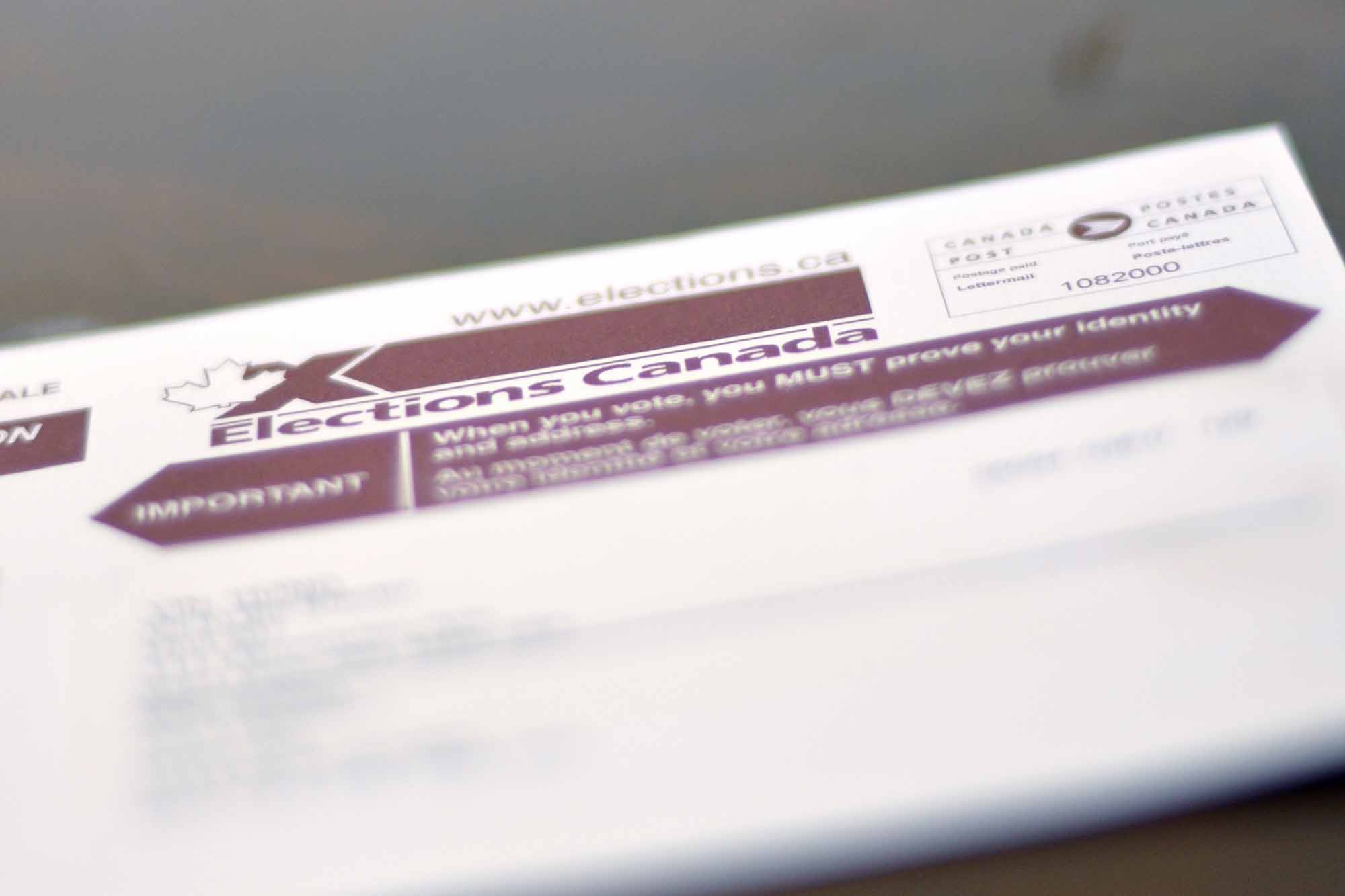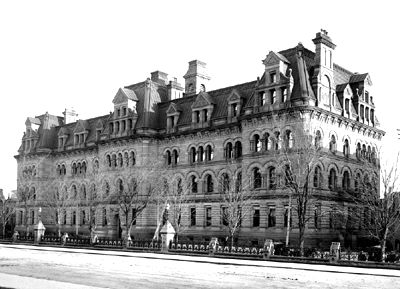Article
Chief Electoral Officer
The Chief Electoral Officer oversees Elections Canada, the non-partisan agency that administers Canada’s federal elections and referendums.

Enter your search term
Signing up enhances your TCE experience with the ability to save items to your personal reading list, and access the interactive map.
Create AccountArticle
The Chief Electoral Officer oversees Elections Canada, the non-partisan agency that administers Canada’s federal elections and referendums.
"https://d3d0lqu00lnqvz.cloudfront.net/media/media/3fcad776-7e8d-47da-86aa-c77b5a9d2744.jpg" // resources/views/front/categories/view.blade.phphttps://d3d0lqu00lnqvz.cloudfront.net/media/media/3fcad776-7e8d-47da-86aa-c77b5a9d2744.jpg

Article
The old-age pension is a government initiative to help Canadians avoid poverty in retirement. It has changed from a strictly anti-poverty measure, that often humiliated the elderly, into an accepted, mainstream aspect of post-work life.
"https://www.thecanadianencyclopedia.ca/images/tce_placeholder.jpg?v=e9dca980c9bdb3aa11e832e7ea94f5d9" // resources/views/front/categories/view.blade.phphttps://www.thecanadianencyclopedia.ca/images/tce_placeholder.jpg?v=e9dca980c9bdb3aa11e832e7ea94f5d9

Article
The Order of Canada, the highest level of distinction in the Canadian Honours System, was established on 1 July 1967, the 100th anniversary of Confederation. Any Canadian may be appointed a Member (CM), Officer (OC) or Companion (CC) of the Order in recognition of outstanding achievements or exemplary contributions in any sector of Canadian society. Appointments to the Order of Canada are made by the Governor General on the recommendation of the Advisory Council for the Order. This body, chaired by the Chief Justice of Canada, meets twice per year to consider nominations made by members of the public. From 1967 to 2015, 6,530 people from all walks of life were appointed to the Order.
"https://d3d0lqu00lnqvz.cloudfront.net/media/media/0e8ba642-899b-4107-b3c7-5a059d4c22fb.jpg" // resources/views/front/categories/view.blade.phphttps://d3d0lqu00lnqvz.cloudfront.net/media/media/0e8ba642-899b-4107-b3c7-5a059d4c22fb.jpg

Article
The federal agency now known as Parks Canada was established in 1911 under the name of the Dominion Parks Branch. Charged with administering a small group of parks and reserves, it was the world's first national parks service.
"https://www.thecanadianencyclopedia.ca/images/tce_placeholder.jpg?v=e9dca980c9bdb3aa11e832e7ea94f5d9" // resources/views/front/categories/view.blade.phphttps://www.thecanadianencyclopedia.ca/images/tce_placeholder.jpg?v=e9dca980c9bdb3aa11e832e7ea94f5d9

Article
Parliamentary ProcedureThere are 5 basic principles of parliamentary procedure: first, the HOUSE OF COMMONS is master of its own proceedings; second, all discussion must be relevant to a motion and directed at a decision by the House; third, if possible, the House should not be taken by surprise (the usual required notice for debates is 48 hours); fourth, a majority of those voting, not a majority of the membership, is required to carry a motion;...
"https://www.thecanadianencyclopedia.ca/images/tce_placeholder.jpg?v=e9dca980c9bdb3aa11e832e7ea94f5d9" // resources/views/front/categories/view.blade.phphttps://www.thecanadianencyclopedia.ca/images/tce_placeholder.jpg?v=e9dca980c9bdb3aa11e832e7ea94f5d9

Article
The prime minister (PM) is the head of the federal government. The PM is typically the leader of the party with the most seats in the House of Commons. The PM controls the governing party and speaks for it. They appoint senators and senior judges. They also appoint and dismiss all members of Cabinet. As chair of Cabinet, the PM controls its agenda and sets the goals of Parliament. Recent years have seen a debate over the growing power of prime ministers and the effect of this on Parliament. This article is a plain-language summary of the Prime Minister of Canada. If you are interested in reading about this topic in more depth, please see our full-length entry: Prime Minister of Canada.
"https://d3d0lqu00lnqvz.cloudfront.net/Justin_Trudeau_2021.jpg" // resources/views/front/categories/view.blade.phphttps://d3d0lqu00lnqvz.cloudfront.net/Justin_Trudeau_2021.jpg

Article
The Prime Minister's Office (PMO) is a central agency that came into its own in the late 1960s.
"https://d3d0lqu00lnqvz.cloudfront.net/media/media/0f1551ef-6d07-484c-8e51-b818a1e1af7c.jpg" // resources/views/front/categories/view.blade.phphttps://d3d0lqu00lnqvz.cloudfront.net/media/media/0f1551ef-6d07-484c-8e51-b818a1e1af7c.jpg

Article
The Privy Council Office (PCO) is a prime minister's government department headed by the clerk designated (since 1940) secretary to the Cabinet. It is perhaps the most important and certainly the most senior of the central agencies of government.
"https://d3d0lqu00lnqvz.cloudfront.net/media/media/0f1551ef-6d07-484c-8e51-b818a1e1af7c.jpg" // resources/views/front/categories/view.blade.phphttps://d3d0lqu00lnqvz.cloudfront.net/media/media/0f1551ef-6d07-484c-8e51-b818a1e1af7c.jpg

Article
King's Counsel (KC) is a title conferred on lawyers by the Crown. It is called Queen's Counsel (QC) when the monarch is a queen. Originally awarded to those considered worthy to argue cases for the Crown, in many provinces it has lost its distinction, being awarded to most practitioners of generally 10 years or more standing who conform politically to the government in office. The title can be conferred by either the provinces or the federal government. Duties no longer attach to the rank, which entitles holders to seniority within the profession and to wear a silk Barrister gown.
"https://d3d0lqu00lnqvz.cloudfront.net/Diefenbaker_as_King-s_Counsel_1929.jpg" // resources/views/front/categories/view.blade.phphttps://d3d0lqu00lnqvz.cloudfront.net/Diefenbaker_as_King-s_Counsel_1929.jpg

Article
In 1927 the Department of National Revenue Act established the Department of National Revenue by renaming the Department of Customs and Excise.
"https://www.thecanadianencyclopedia.ca/images/tce_placeholder.jpg?v=e9dca980c9bdb3aa11e832e7ea94f5d9" // resources/views/front/categories/view.blade.phphttps://www.thecanadianencyclopedia.ca/images/tce_placeholder.jpg?v=e9dca980c9bdb3aa11e832e7ea94f5d9

Article
From 1858 to 1907 most issues of Canadian coins were struck at the Royal Mint in London, England, with additional issues from the Heaton Mint of Birmingham.
"https://d3d0lqu00lnqvz.cloudfront.net/media/media/bc71e340-f5ed-4737-ab93-f5c01058e39c.jpg" // resources/views/front/categories/view.blade.phphttps://d3d0lqu00lnqvz.cloudfront.net/media/media/bc71e340-f5ed-4737-ab93-f5c01058e39c.jpg

Article
The Senate is the Upper House of Canada’s Parliament. Its 105 members are appointed and hold their seats until age 75. The Senate’s purpose is to consider and revise legislation; investigate national issues; and most crucially according to the Constitution, give the regions of Canada an equal voice in Parliament. The Senate is a controversial institution. It has long been regarded by many Canadians as a place of unfair patronage and privilege. An unresolved debate continues about whether it should be reformed into an elected body accountable to the voters, or abolished.
"https://d3d0lqu00lnqvz.cloudfront.net/media/media/c19d86a2-25d9-49fa-b11e-f7544e8c71f2.jpg" // resources/views/front/categories/view.blade.phphttps://d3d0lqu00lnqvz.cloudfront.net/media/media/c19d86a2-25d9-49fa-b11e-f7544e8c71f2.jpg

Editorial
The following article is an editorial written by The Canadian Encyclopedia staff. Editorials are not usually updated.
"https://d3d0lqu00lnqvz.cloudfront.net/media/media/c19d86a2-25d9-49fa-b11e-f7544e8c71f2.jpg" // resources/views/front/categories/view.blade.phphttps://d3d0lqu00lnqvz.cloudfront.net/media/media/c19d86a2-25d9-49fa-b11e-f7544e8c71f2.jpg

Article
Statistics Canada is the nation’s central statistical agency. It was established in 1918 as the Dominion Bureau of Statistics and adopted its present name in 1971. Under the Statistics Act of that year, it has the responsibility to “collect, compile, analyse, abstract and publish statistical information relating to the commercial, industrial, financial, social, economic and general activities and condition of the people.” The agency works with government departments to develop integrated social and economic statistics for Canada and the provinces and territories. In addition, Statistics Canada is a scientific research organization that develops methodologies and techniques related to statistics and survey design.
"https://d3d0lqu00lnqvz.cloudfront.net/media/new_article_images/StatisticsCanada/Jean Talon Building.JPG" // resources/views/front/categories/view.blade.phphttps://d3d0lqu00lnqvz.cloudfront.net/media/new_article_images/StatisticsCanada/Jean Talon Building.JPG

Article
The Supreme Court of Canada is the court of last resort for all legal issues in Canada, including those of federal and provincial jurisdiction. From humble beginnings as an opaque body subject to being overruled by the British Privy Council, the court now has the final judicial say on a broad range of contentious legal and social issues, ranging from the availability of abortion to the constitutionality of capital punishment and assisted suicide.
"https://d3d0lqu00lnqvz.cloudfront.net/media/media/c813762a-d4db-4a05-b769-18eb4e9b7957.jpg" // resources/views/front/categories/view.blade.phphttps://d3d0lqu00lnqvz.cloudfront.net/media/media/c813762a-d4db-4a05-b769-18eb4e9b7957.jpg
